Emma
Hogan
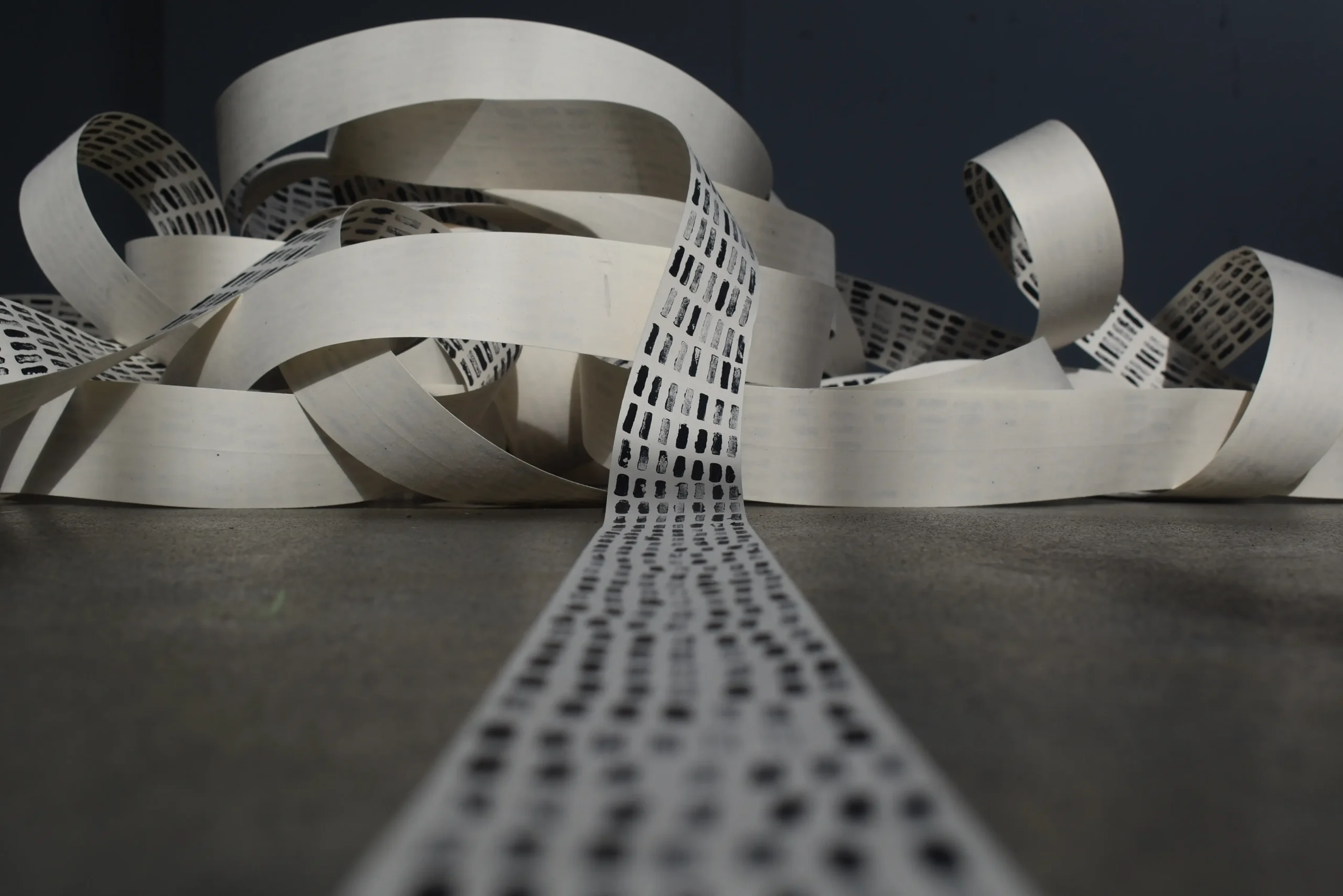
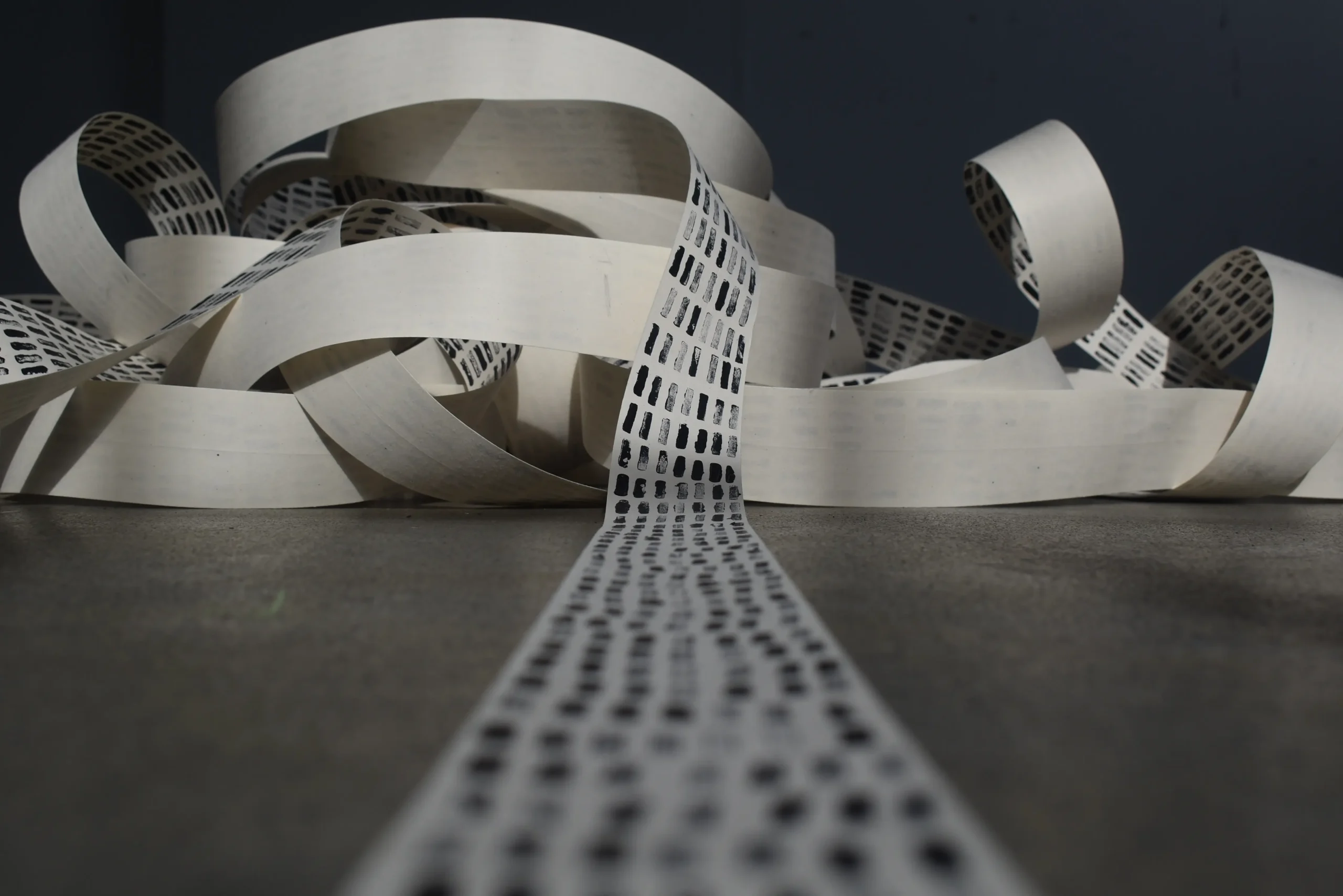
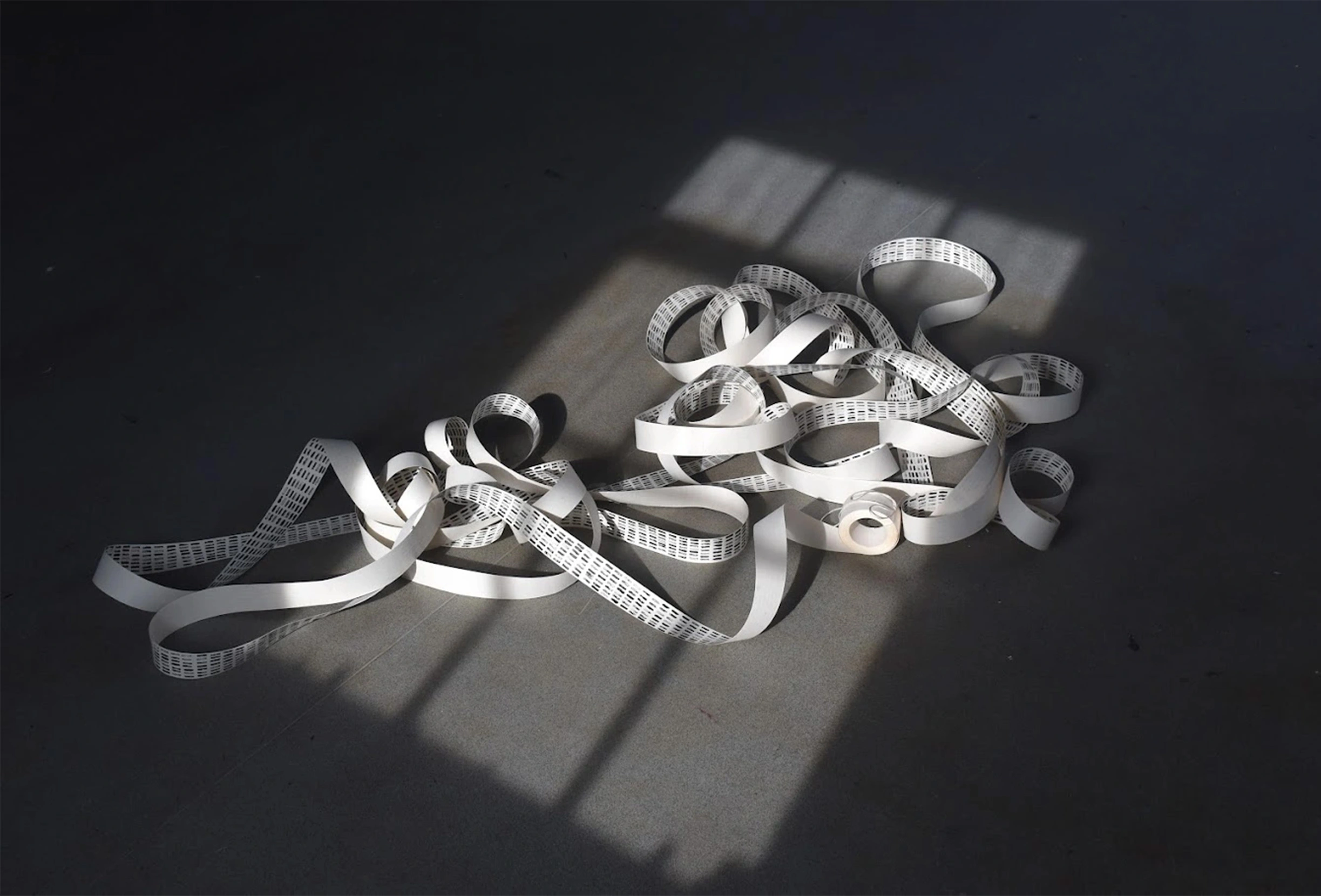
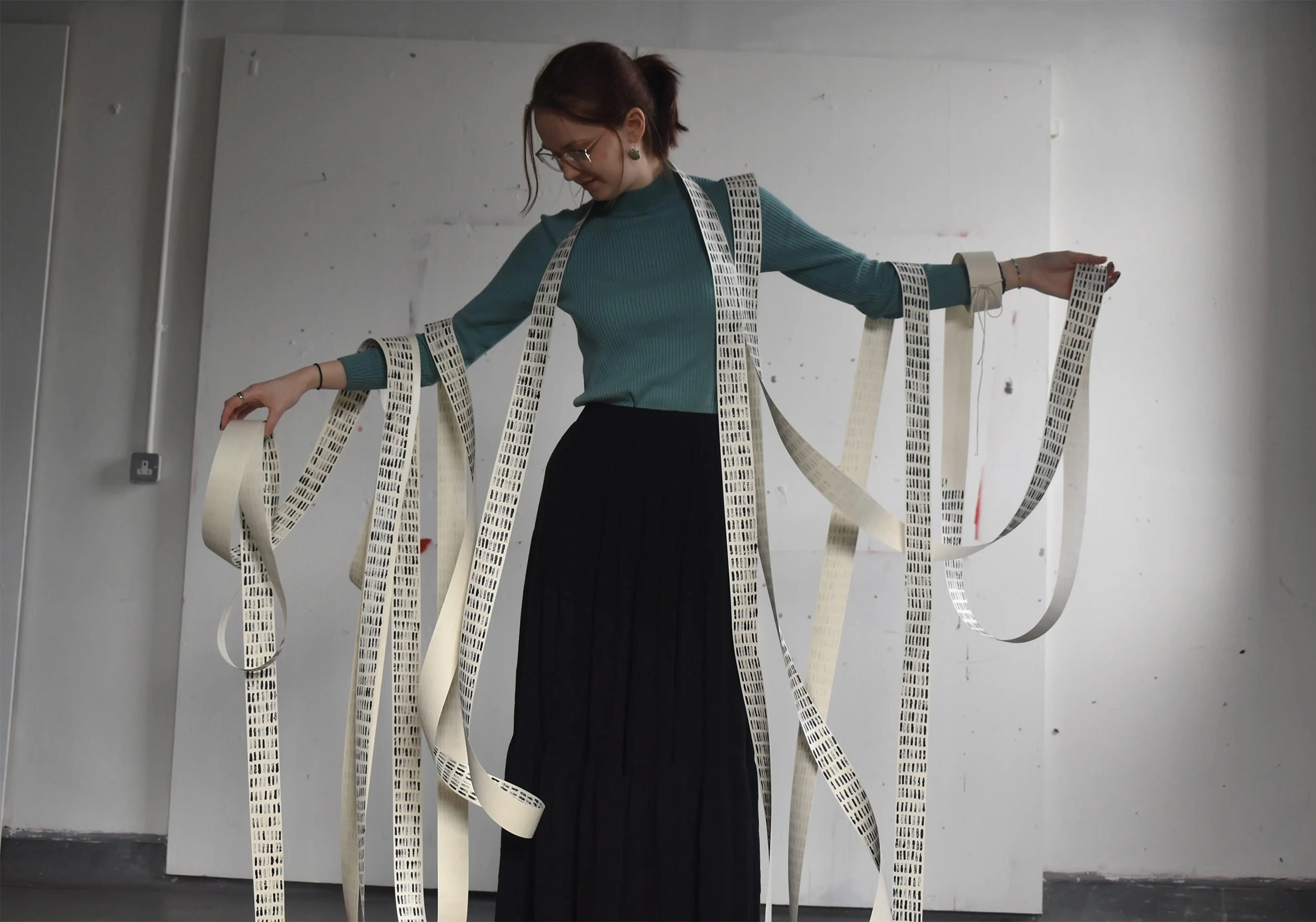
"The Sum of my Parts"
Influenced by the work of data artist Laurie Frick, my work aims to investigate the human obsession with logging and recording data from everyday life. What happens when this familiar data is abstracted to the point of surreality? This investigation is informed in part by the Fluxus art movement, through observation and recording of the everyday, tracking each activity throughout a series of days and collecting and counting of the mundane. Looking at one’s life as an outside observer in order to record and analyse everyday aspects proved a thought provoking-experience, I found myself questioning humanities reliance on technology to record data, showing an apparent mistrust of our own minds.
This main component of this project consists of over 7,892 tally marks along the length of the paper, signifying the number of days between my birth and the creation of this piece.
This work leads me to consider obsession as a form of false refuge, an attempt at controlling the uncontrollable. I myself find comfort in this forensic approach to life and the repetitive nature of data collection.
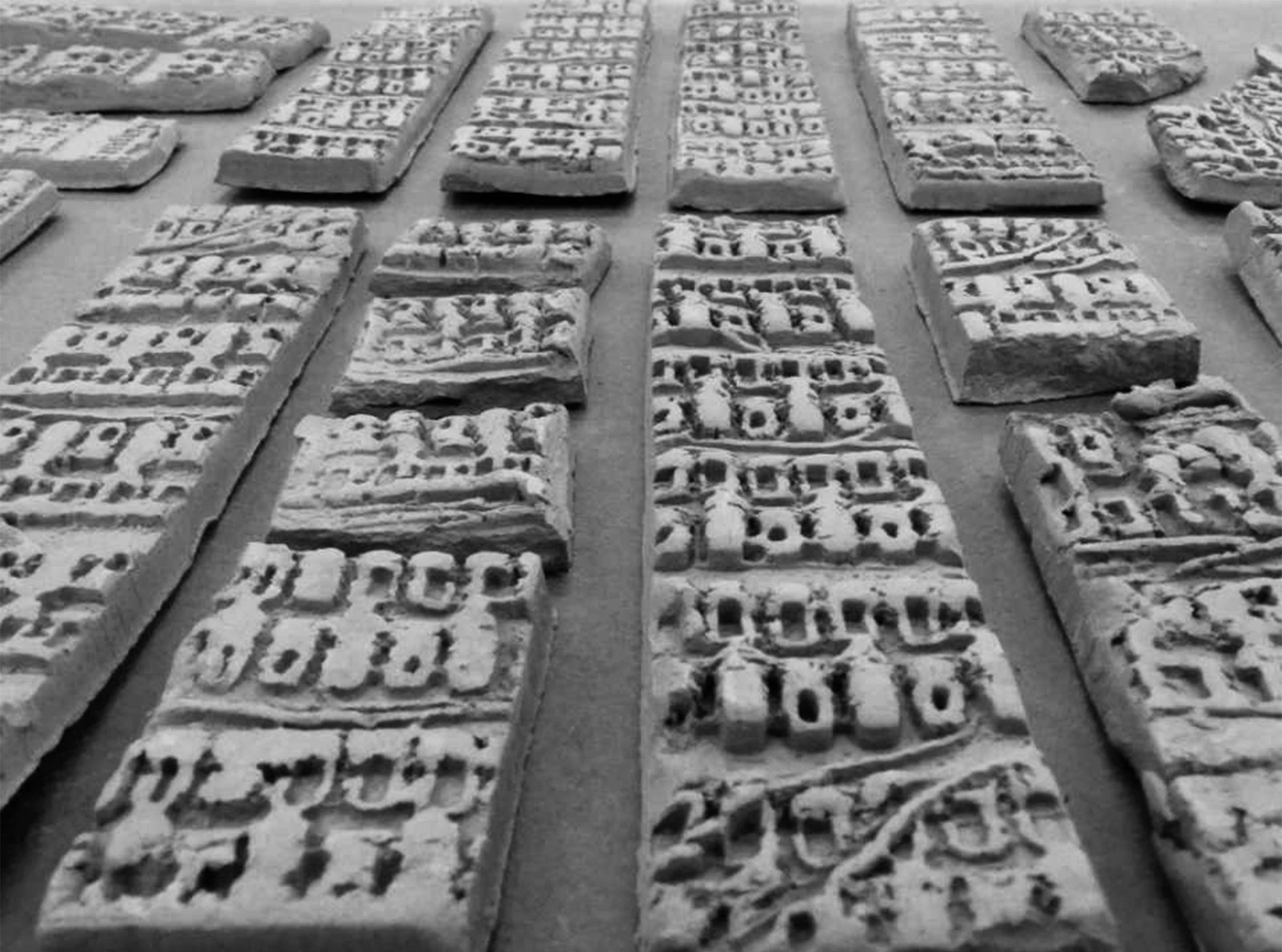
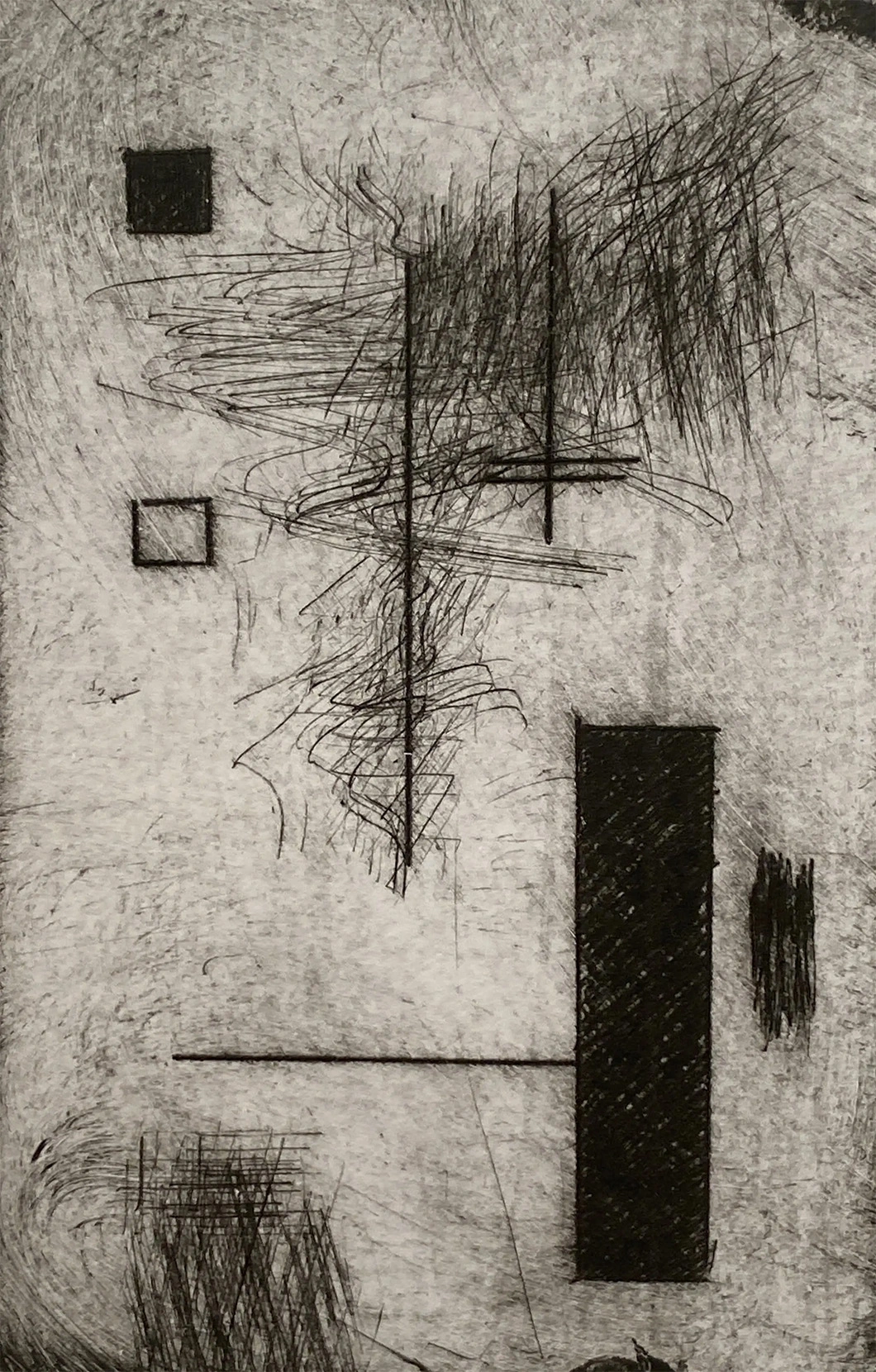
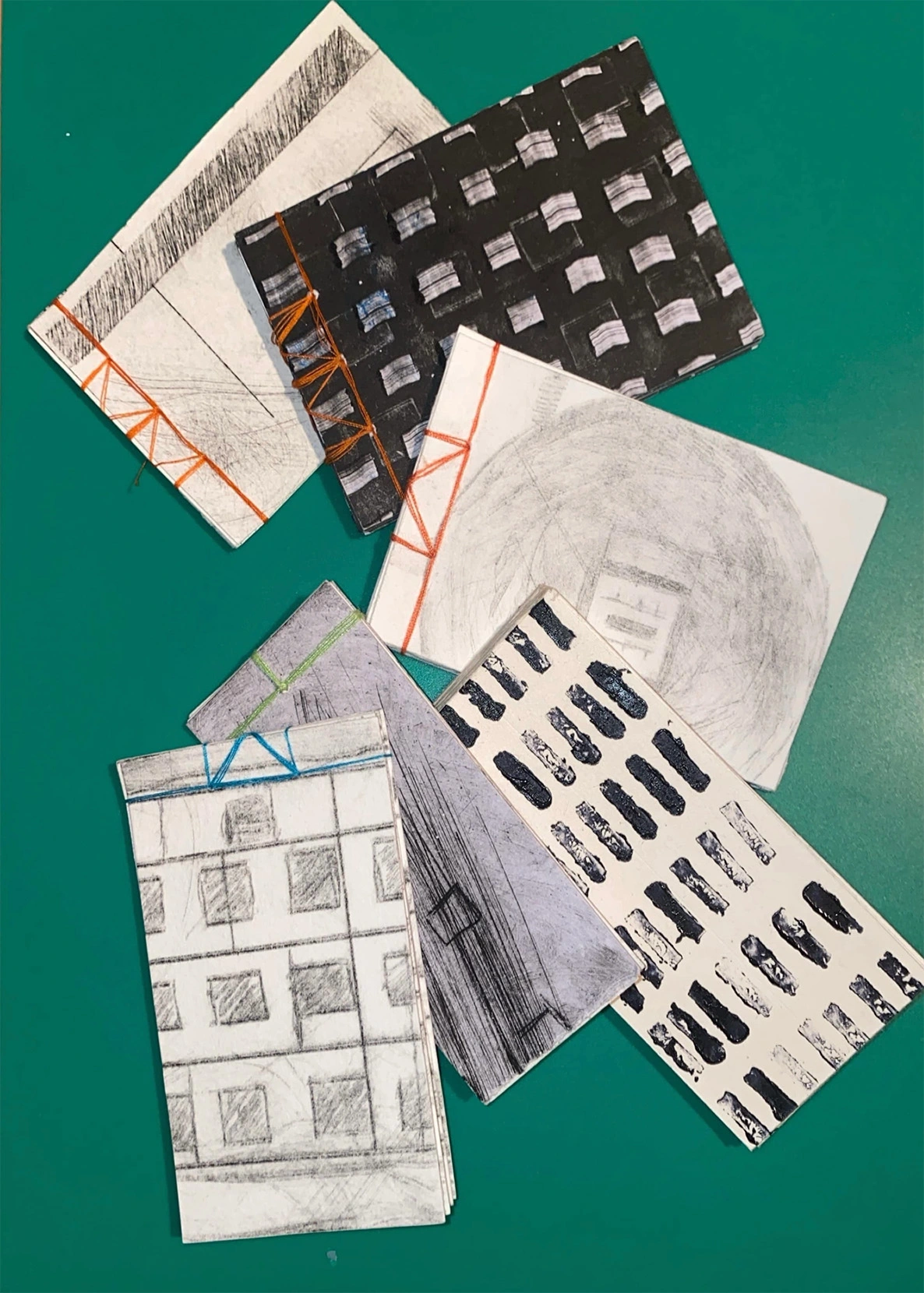
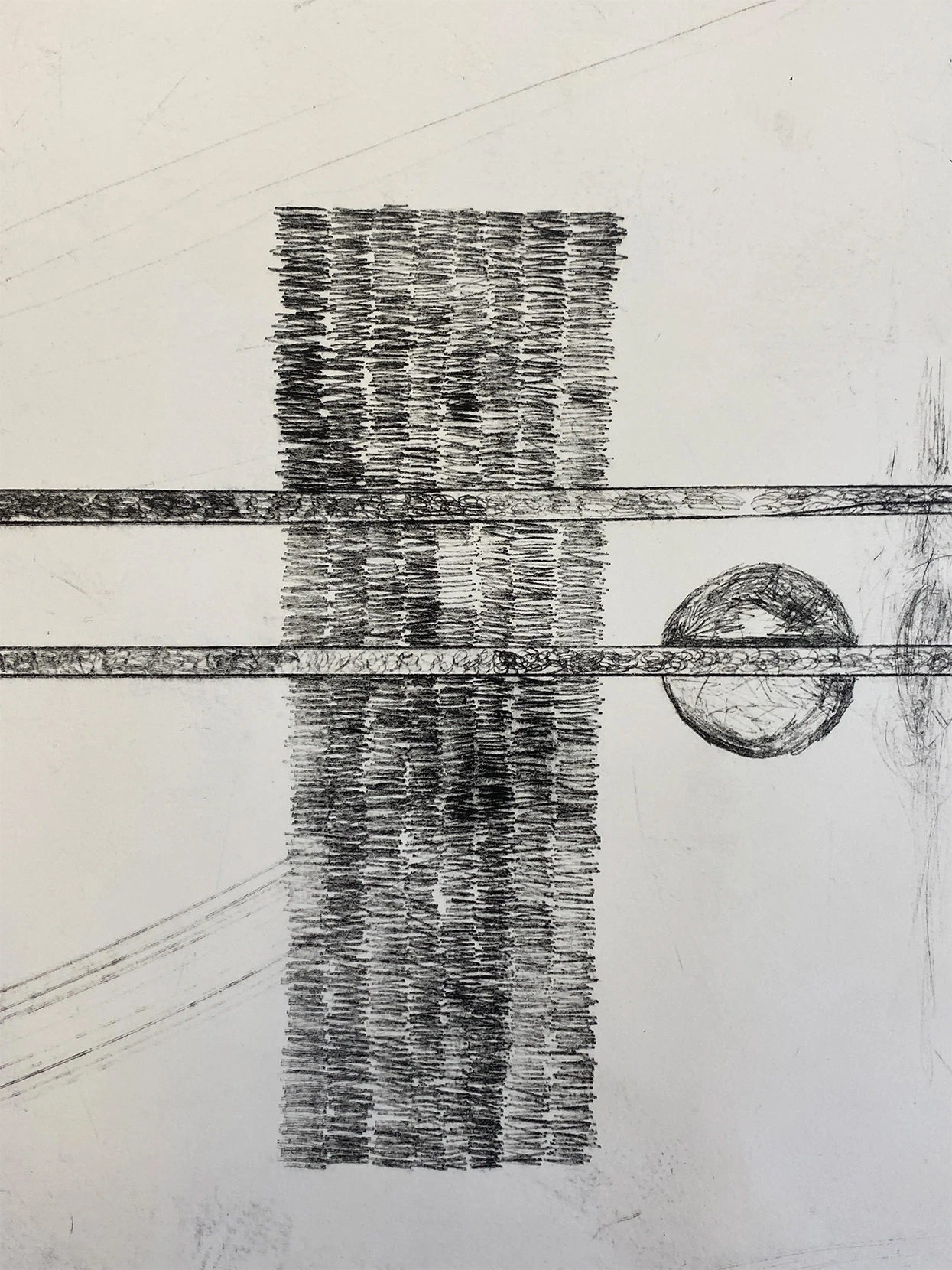
"Not a Monolith"
This body of work draws connections between the ephemeral nature of data and its enduring, often overlooked physical presence within data centres. With over 82 data centres currently in Ireland, and approval granted for 40 more (Ryan-Christensen, 2024), increasing amounts of our energy and resources are dedicated to structures we seldom see and rarely want to understand.
The work parallels the visual language of unreadable server code with the concept of the monolith or standing stone, ancient forms inscribed with lost or illegible text. These looming figures echo the physical form of the data server: vast, unknowable, and containing millions of unseen moments from countless lives. The emotional response of fear, awe, curiosity, is central to the work.
Inspired by nearby data sites, I explore shapes and textures through analogue photography, printmaking, and 3D printing. Drawing influence from Joan Miró and Max Ernst’s surrealist abstractions, I contrast dreamlike, fluid lines with structured, repetitive forms. This disjointed visual language creates tension, reflecting the uneasy coexistence of the physical and digital worlds. by creating contradictions within my processes, I aim to subvert the notion of technological superiority, highlighting the inherent value in both modern and historical modes of production.
Reference: Ryan-Christensen, A. (2024) What is a data centre – and what does it actually do?, RTE.ie. Available at: https://www.rte.ie/brainstorm/2024/0411/1442289-ireland-date-centres-energy-electricity-climate-policy/
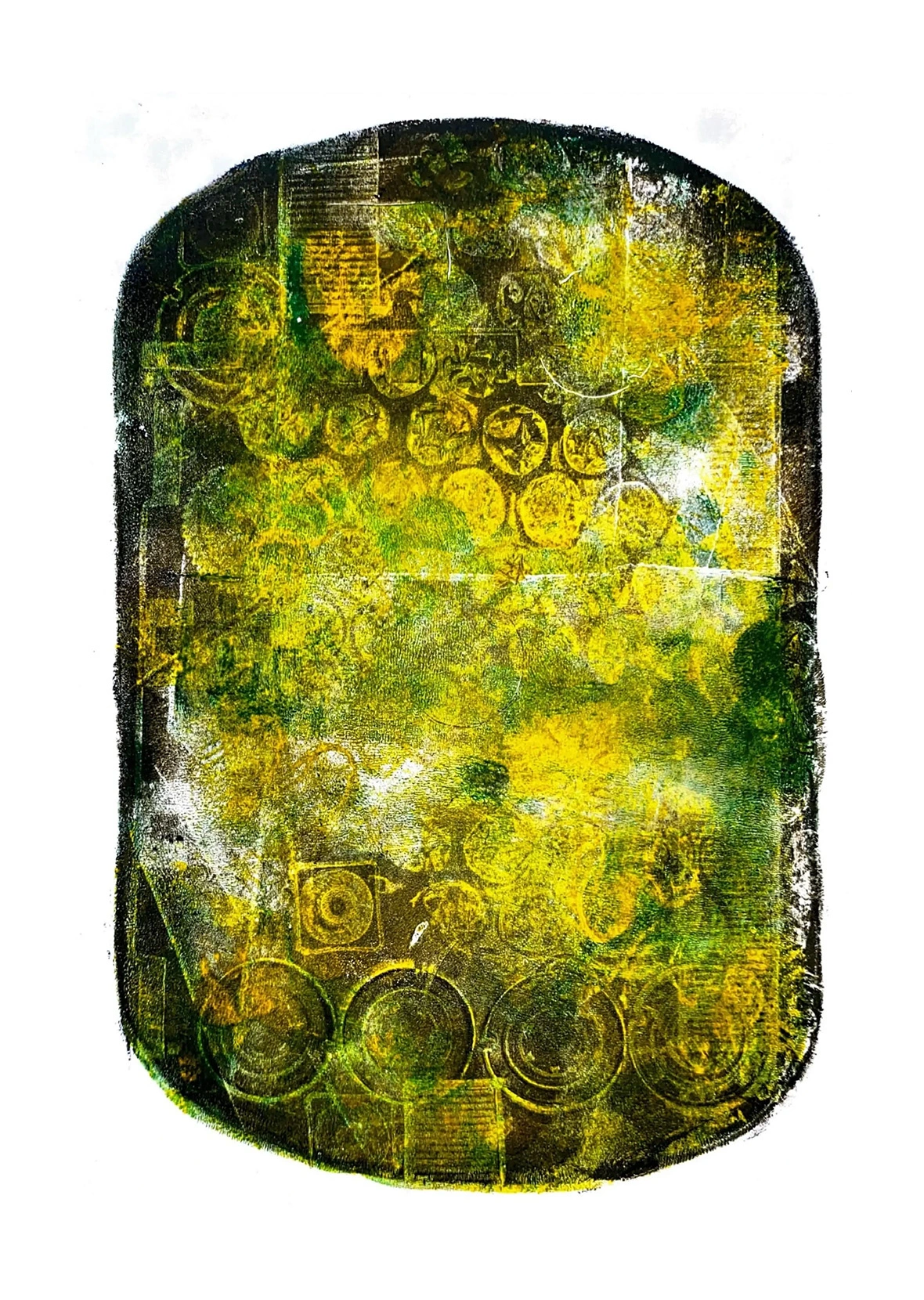
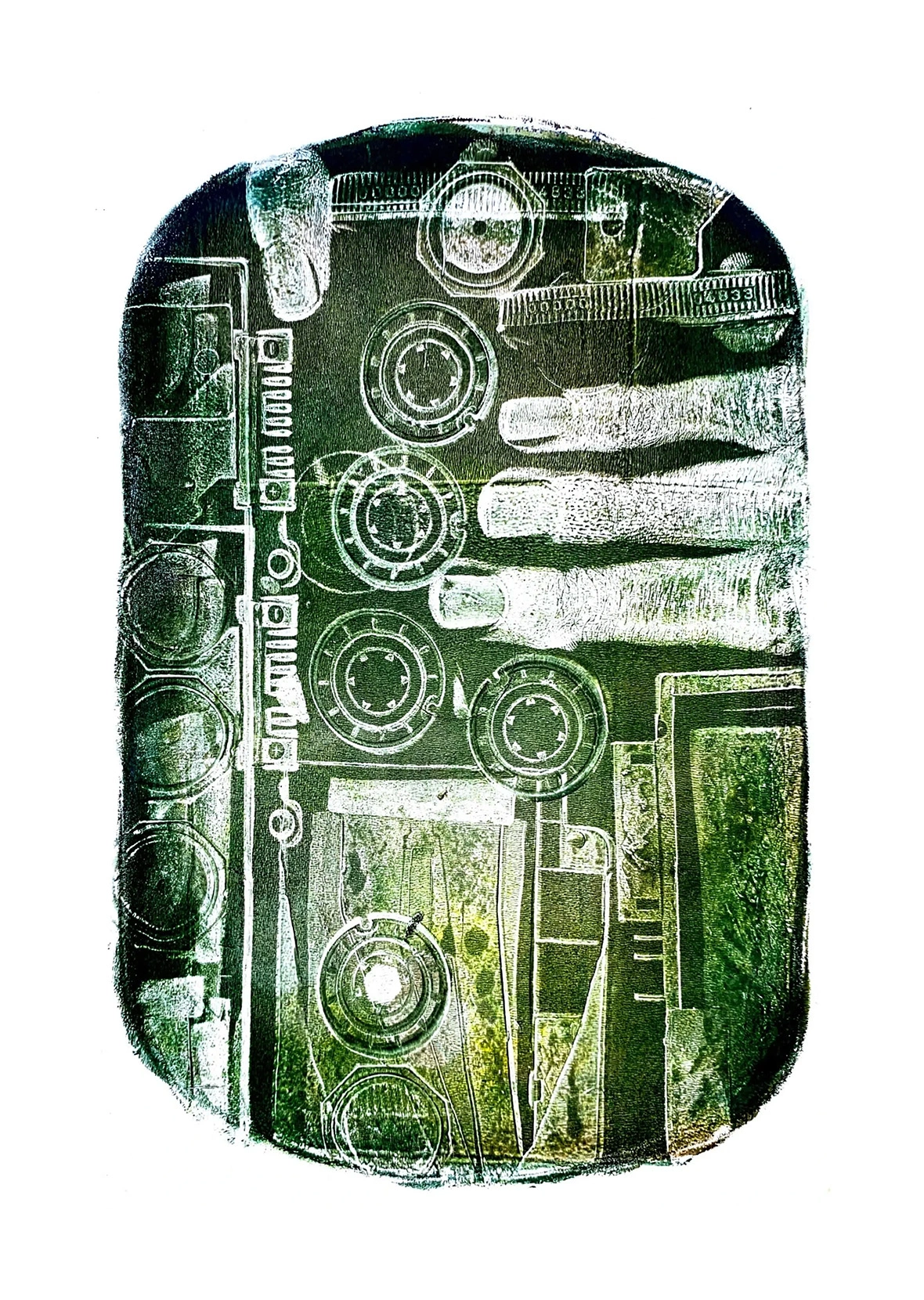
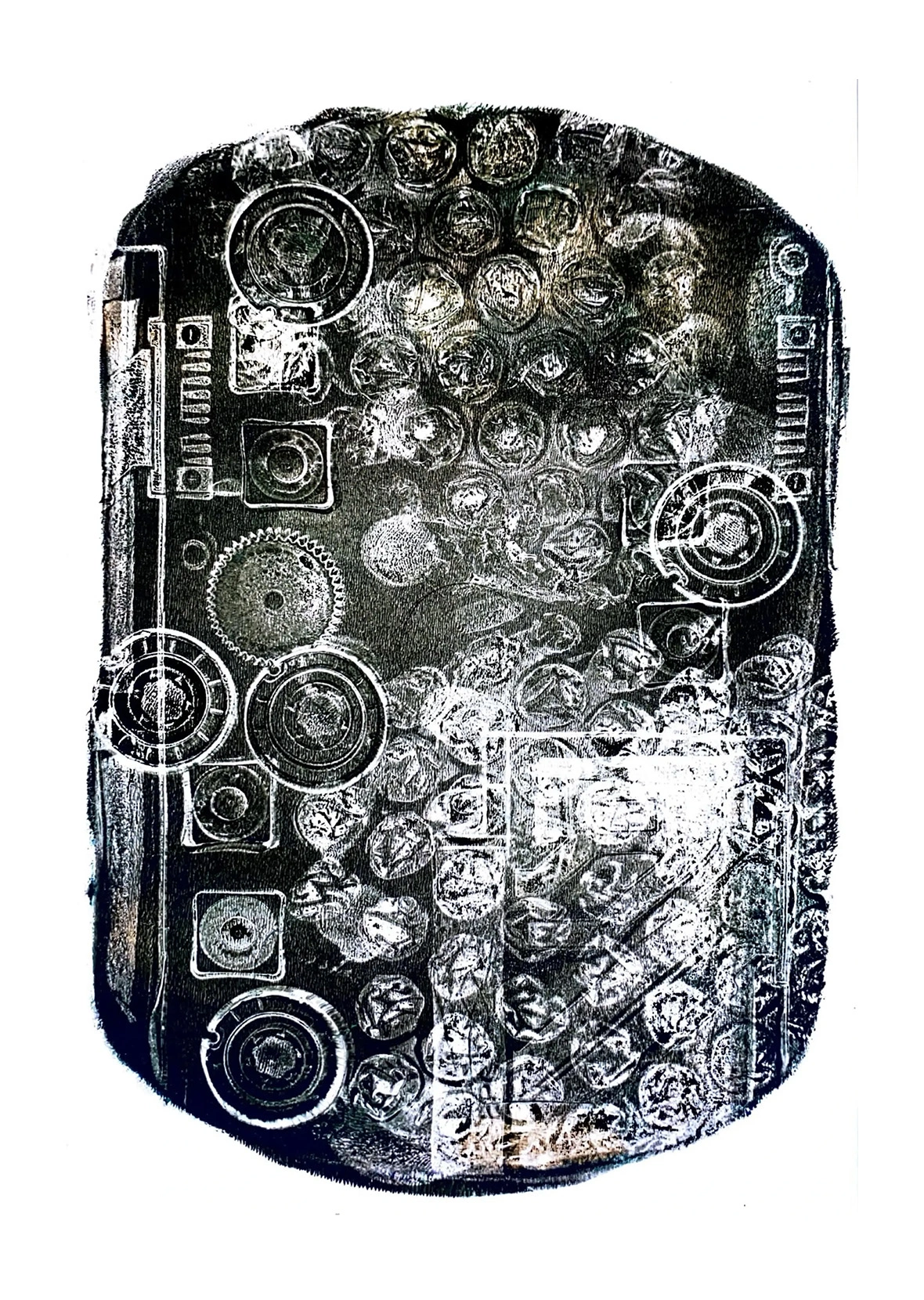
"Ghost in the Machine"
This project investigates the physical manifestation of the digital world, focusing on the intricate structures found within motherboards and computer hardware. Often hidden beneath sleek casings, these components reveal a fascinating network of circuits, grids, and pathways. By isolating and reinterpreting these patterns, the work draws attention to the aesthetic and structural beauty of technology.
Using handmade Gelli plates as a printmaking tool, the project embraces a tactile and experimental process. Each print becomes a physical response to digital form, translating the cold precision of technological components into layered, organic compositions. The repetition and winding structures echoed in the prints mimic both the functionality of circuitry and the infinite loops of digital information flow.
Found objects and elements of redundant technology are embedded into the process, not only as visual references but also as material components. This conscious reuse challenges the disposable nature of modern tech culture and reflects on themes of obsolescence, memory, and materiality. The resulting prints serve as a meditation on the intersection between human touch and machine logic.
